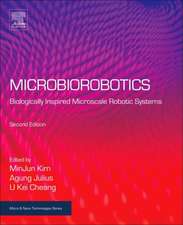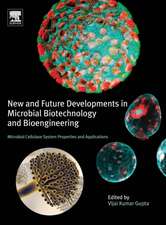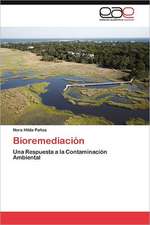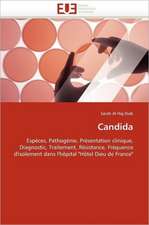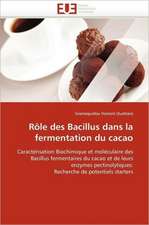New and Future Developments in Microbial Biotechnology and Bioengineering: Microbial Secondary Metabolites Biochemistry and Applications
Editat de Vijai G. Gupta, Anita Pandeyen Limba Engleză Hardback – 15 iun 2019
The book integrates the aforementioned frontline branches into an interdisciplinary research work to satisfy those working in biotechnology, chemical engineering, alternative fuel development, diagnostics and pharmaceuticals. Chapters related to important research work on applications of microbial secondary metabolites are written by specialists in the various disciplines from the international community.
- Compiles the latest developments in the area of microbial secondary metabolites
- Authored by the top international researchers in this area
- Includes information related to nearly all areas of a microbial secondary metabolites system
Preț: 1026.12 lei
Preț vechi: 1338.16 lei
-23% Nou
Puncte Express: 1539
Preț estimativ în valută:
196.37€ • 213.23$ • 164.95£
196.37€ • 213.23$ • 164.95£
Carte tipărită la comandă
Livrare economică 16-30 aprilie
Preluare comenzi: 021 569.72.76
Specificații
ISBN-13: 9780444635044
ISBN-10: 0444635041
Pagini: 380
Ilustrații: 50 illustrations
Dimensiuni: 216 x 276 x 27 mm
Greutate: 1.17 kg
Editura: ELSEVIER SCIENCE
ISBN-10: 0444635041
Pagini: 380
Ilustrații: 50 illustrations
Dimensiuni: 216 x 276 x 27 mm
Greutate: 1.17 kg
Editura: ELSEVIER SCIENCE
Public țintă
Bioengineers, Biochemical Engineers, Biochemist, Biotechnologists, food technologist, enzymologists, and related Professionals/ researchers. Graduate and postgraduate students, researchers and microbiologists, mycologistsCuprins
Section A. Chemistry and biosynthesis
1. Peptide and peptide-derivative antibiotics
2. Polyketide derivatives
3. Other groups of bioactive products
Section B. Genetics and bioengineering
1. Preparation of high production microorganisms
2. Genetic manipulation of secondary metabolites producers
3. Bioengineering of secondary metabolites
4. Secondary metabolites: from metabolic engineering to synthetic biology/Metabolomics for secondary metabolites
Section C. Obtaining new bioactive secondary metabolites
1. Isolation from natural resources
2. Producers of bioactive compounds
3. Semi-synthetic and synthetic bioactive products
4. Hybrid bioactive products and combinatorion biosynthesis
Section D. Regulation of secondary metabolites production
1. Growth phases of microbial culture
2. Control of fermentation by basal nutrients
3. How signals from the medium are received
4. Regulation by low molecular compounds
5. Autoregulators
6. Regulation by metal ions
Section E. Resistance to secondary metabolites
1. Resistance of bioactive secondary metabolites producers
2. Resistance in pathogenic microorganisms
1. Peptide and peptide-derivative antibiotics
2. Polyketide derivatives
3. Other groups of bioactive products
Section B. Genetics and bioengineering
1. Preparation of high production microorganisms
2. Genetic manipulation of secondary metabolites producers
3. Bioengineering of secondary metabolites
4. Secondary metabolites: from metabolic engineering to synthetic biology/Metabolomics for secondary metabolites
Section C. Obtaining new bioactive secondary metabolites
1. Isolation from natural resources
2. Producers of bioactive compounds
3. Semi-synthetic and synthetic bioactive products
4. Hybrid bioactive products and combinatorion biosynthesis
Section D. Regulation of secondary metabolites production
1. Growth phases of microbial culture
2. Control of fermentation by basal nutrients
3. How signals from the medium are received
4. Regulation by low molecular compounds
5. Autoregulators
6. Regulation by metal ions
Section E. Resistance to secondary metabolites
1. Resistance of bioactive secondary metabolites producers
2. Resistance in pathogenic microorganisms





